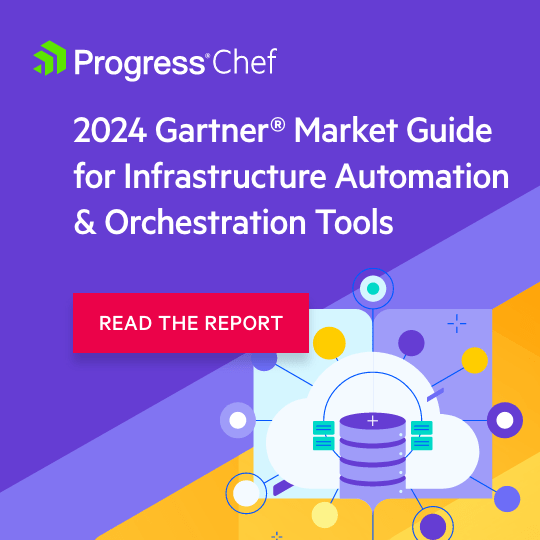Latest Stories
Making a Leader/Follower MySql Cluster with Habitat!
One of the most compelling pieces of Habitat is using the Supervisor to create self-organizing and self-healing topologies. Today we will, step by step, create a MySQL Leader/Follower cluster using Habitat. Setting up your infrastructure Create three virtual machines on the cloud provider of your choice (when creating this post, I used AWS EC2).

Chef Community Engineering – Q2 Update
It’s hard to believe we’re half way through the year already, but having had a chance to meet with and celebrate our community at ChefConf in Austin a couple months ago, we’ve had a really phenomenal second quarter. I’m really excited to share some of the things we’ve been up to, together!

Bootstrapping Nodes in Bulk
Bootstrapping the chef-client on many nodes in bulk can present a challenge.

Succeeding with the Chef Community
The Chef community is an active, diverse and smart group of people who contribute code to our open source projects, create and share community cookbooks, and want to help you succeed with Chef.

Detect & Correct with Chef Automate and the Audit Cookbook
The recent launch of Chef Automate 1.5 brought with it the GA release of a new Compliance view to the Chef Automate UI. This update brings with it some new detailed compliance reporting dashboards, as well as a means to easily install and manage InSpec Profiles without needing to deploy a separate Compliance Server.

Habitat and Twelve-Factor Applications
Twelve-Factor Applications are not something revolutionary or new. The concepts were originally published over 5 years ago, however they are are still relevant today as they were then.

Self-monitoring Chef using Sensu
Chef is one of the most popular tools for DevOps awesomeness, and you won’t believe what’s one of the biggest causes of chef-server unavailability: disk full Yep, you read that right. In 2017, there’s still a LOT of people who don’t have all their systems being carefully monitored by a trustworthy application.

Habitat on Windows!
We are pleased to announce that the latest release of Habitat – v0.25.0 – brings Habitat to Windows! This functionality has been evolving steadily for the last several months and has been available in various pieces along the way. Perhaps you have seen my demo showing where we were back in March. Well with v0.25.

Understanding InSpec Profile Inheritance
Engineers sometimes use the phrase DRY – Don’t Repeat Yourself. It’s commonly used when writing or reviewing code that is repetitive. The usual solution is to take the repetitious code and turn it into something that can be reused. It’s really easy to fall into the “repeat yourself” trap, even with a tool like InSpec.









